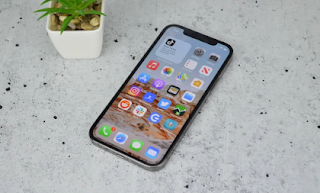The iPhone 13 launch event is almost here and Apple is expected to announce it officially on 14 September. The iPhone 13 rumors are o cue as they continue to drop left and right, and the newest ones are quite revealing.
Many saw the new MagSafe Charger that Apple created for the iPhone 13 series in FCC documentation. That indicates wireless charging might get some significant upgrades on the new iPhone series. Now, a separate leak gives an early iPhone 13 benchmarks for the brand new A15 Bionic System-on-Chip (SoC).
Apple’s A- and M-series chips are the critical ingredient for iPhone, iPad, and Mac devices. The A-series SoCs have allowed Apple to stay ahead of the competition ever since Apple first released the processor that powers the iPhone. Qualcomm, Samsung, and others have tried to catch up ever since. But speed tests always show that the iPhone has the fastest overall experience.
Like every new generation, the iPhone 13 series is expected to deliver a faster SoC. It is something the consumers take for granted every year, and Apple always delivers. In this case, users are looking at the A15 Bionic that will power the entire iPhone 13 line. The chip might also make its way into some of the new iPads launching this year.
Previous reports said that Apple ensured it will have plenty of A15 chips on hand for the iPhone 13 series this year, in spite of the global chip shortage. Apple is TSMC’s main client, and the Taiwanese foundry has prioritized chip manufacturing for the iPhone maker. Newer reports said that Apple might incur higher production costs for these chips. In turn, Apple might pass on that expense to the consumer with slightly higher prices.
Apple will surely explain what makes the A15 Bionic different from last year's A14 version during its upcoming keynote. But while we wait, there’s a new benchmark leak that tells us exactly what to expect from the iPhone 13 in terms of performance.
According to a leaked A15 Bionic benchmark, the new chip is 13.7 percent faster than the A14 version. The chip supposedly reached 198 fps during the first round of Manhattan 3.1 GPU benchmark testing. But the frames dropped to 140-150 in the second round. As noted above, we’re looking at a test for a July A15 Bionic sample. That means the chip likely wasn’t optimized at the time.


















0 comments
Post a Comment